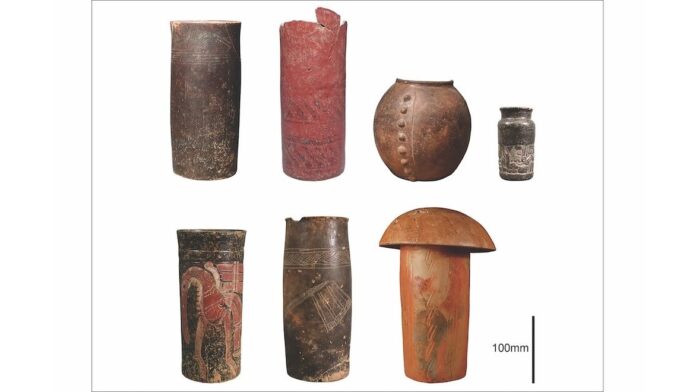[ad_1]
Residue on pre-Hispanic ceramic vases unearthed in Guatemala contain traces of nicotine, a new chemical analysis reveals.
Archaeologists discovered the pottery collection at the archaeological site of Cotzumalhuapa, which served as one of Mesoamerica’s “greatest cities” during the Late Classic Period (A.D. 650 to 950), according to a study published Monday (March 4) in the journal Antiquity.
While early colonial accounts and past studies have confirmed that tobacco use occurred in Mesoamerica, there had been little physical evidence of the practice until now, according to a statement.
“We knew that tobacco was a very important substance employed for a variety of ritual and therapeutic purposes in ancient Mesoamerica and across the New World,” study co-author Oswaldo Chinchilla Mazariegos, an associate professor of anthropology and the director of undergraduate studies in archaeology at Yale University, said in the statement. “However, archaeological evidence is scarce because the remains of tobacco rarely preserve well.”

For the study, the archaeologists analyzed vases found near the acropolis of El Baúl in Cotzumalhuapa in 2006 and 2007. They chemically tested samples scraped from the insides of seven vases, and three came back positive for traces of tobacco. Researchers were surprised by the results, since the tall, narrow shape of the vessels was similar to those typically used to hold liquids. This could mean that instead of being “smoked as a dried leaf or sniffed in powder form,” the tobacco “may also have been consumed as a liquid infusion,” according to the statement.
Related: Jade mask depicting Maya storm god unearthed in royal tomb in Guatemala
It’s also possible that people from the unnamed culture were drinking the liquid infusion while either smoking or snorting the tobacco, the researchers concluded.
Ingesting high concentrations of nicotine can be toxic and even lethal, so a drink mixture hints that tobacco was used during rituals as “narcotics to induce deep sleep, visions and divinatory trances,” the researchers wrote in the study. There is prior evidence that the Aztecs and Indigenous people on the Caribbean Isles also took part in rituals using nicotine.
“We hoped that analysis of residues inside these well-preserved vessels would reveal details about the use of plants in ritual activities,” Chinchilla Mazariegos said in the statement.
The ceramic vessels were found near the remains of sweat baths at Cotzumalhuapa, which is further evidence that the tobacco infusions may have been used in purification rituals, the authors noted in the study.
The discovery also offers clear evidence that tobacco usage in the Americas began earlier than experts thought. However, this isn’t the earliest known example of tobacco use; a 2021 study based on charred seeds found in the Utah desert determined that people were smoking tobacco at least 12,000 years ago.
[ad_2]
Source link


